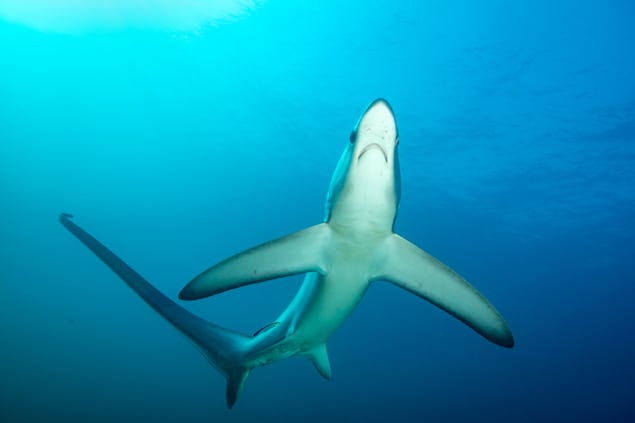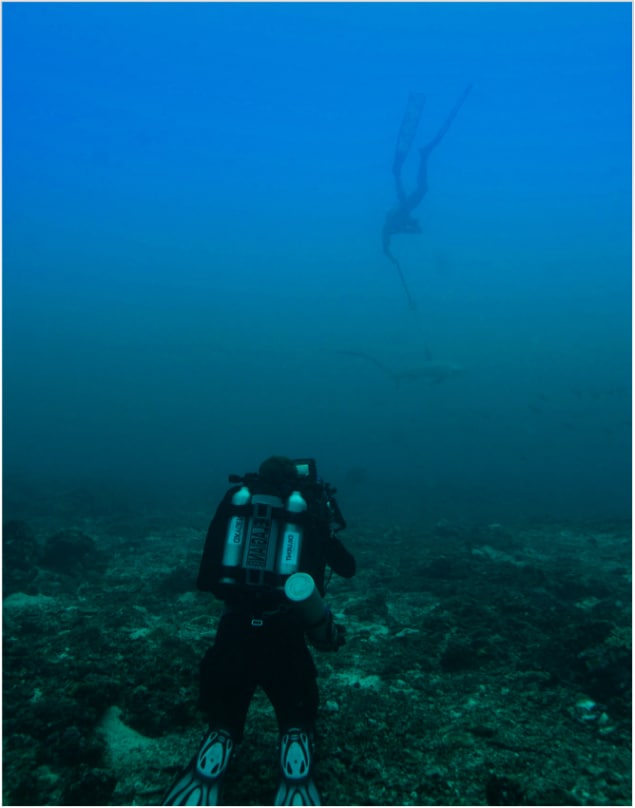
Pelagic thresher sharks visit the Monad Shoal seamount in the Philippines so that cleaner wrasse eat the parasites that infest their skin and gills. In turn, the sharks attract scuba divers from around the world. The local economy near Malupascua Island receives 80% of its income from dive tourism and local people have taken measures to protect the sharks – the Bantay Dagat community–based organisation guards the area against illegal fishing day and night.

When they venture further afield, these sharks, which are found in the Indian and Pacific Oceans, are at risk from fishing lines set for smaller fish, and from capture for their meat, fins, skin, and liver oil. Combined with the animals’ slow reproduction, these pressures mean that numbers of pelagic thresher sharks are declining. The species is listed as vulnerable by the International Union for the Conservation of Nature.
Until recently, however, scientists had little idea how far individuals that visit the seamount roam. With that in mind, Simon Oliver of the University of Chester, UK, and his colleagues tagged pelagic thresher sharks and tracked their whereabouts acoustically.
“We decided that we needed to understand how these animals use this part of the Indo-Pacific Ocean in order to better protect them,” said Oliver, who has studied threshers for 15 years and was the first to explain why these sharks frequent the seamount.
A free diver attached acoustic tags behind the dorsal fins of 14 sharks. Free divers can get closer than scuba divers to the sharks, which are sometimes skittish. Each tag transmitted pulses of sound – or “pings” – at a unique transmission frequency, enabling the researchers to identify individual animals.

Sharks hunt via Lévy flights
Oliver’s team moored four submersible data loggers at known cleaning stations at the seamount. These picked up pings from the tags and showed that individual sharks preferred particular cleaning sites, in the early morning. The researchers reported these findings in Biological Conservation.
Oliver and colleagues followed the tagged sharks as they arrived at and left the seamount using acoustic telemetry from a boat. Most swam along a specific corridor to leave the cleaning areas to forage for food; the researchers dubbed this the “shark highway”. The threshers’ average speed was nearly 4 km/hour.
The tracking data also revealed that each day the sharks move through up to five jurisdictions. Here their degree of protection varies. In the Leyte jurisdiction, the sharks are at risk of becoming bycatch in Indian sardine fisheries or of being targeted because they foul fishing gear. In Cebu they are protected because they generate tourist revenue but may be at risk from fisheries in areas with fewer tourists. In other jurisdictions the pelagic thresher sharks are targeted for their meat and fins. Effective protection of the sharks would need at least five territorial governments in the Philippines to coordinate.
The study could also enable scientists to estimate shark numbers from dive records, by providing a guide for linking the two. Now Oliver’s Thresher Shark Research and Conservation Project aims to use satellite tags to monitor these animals over a larger scale and to better inform conservation measures throughout the Philippine archipelago.



